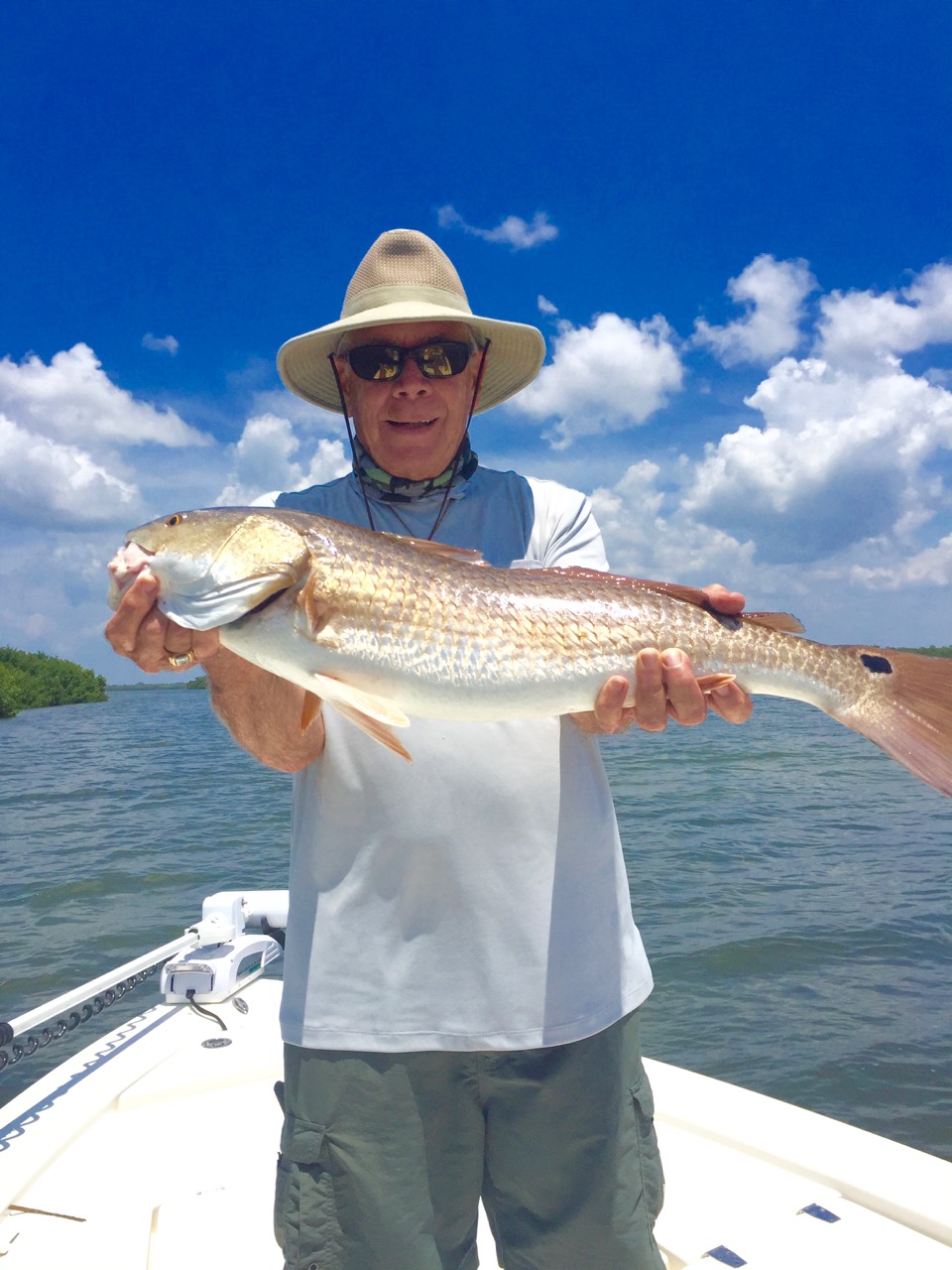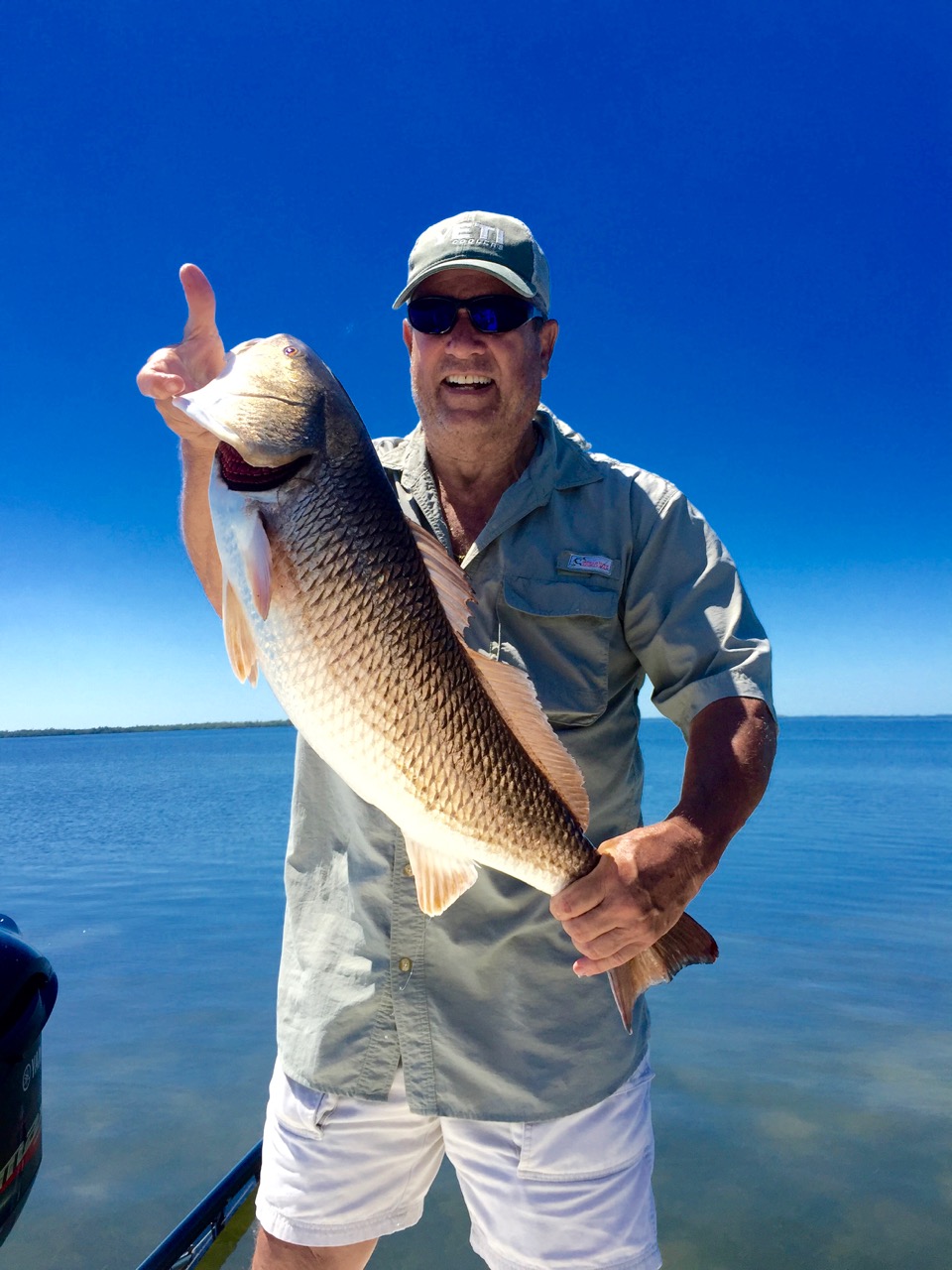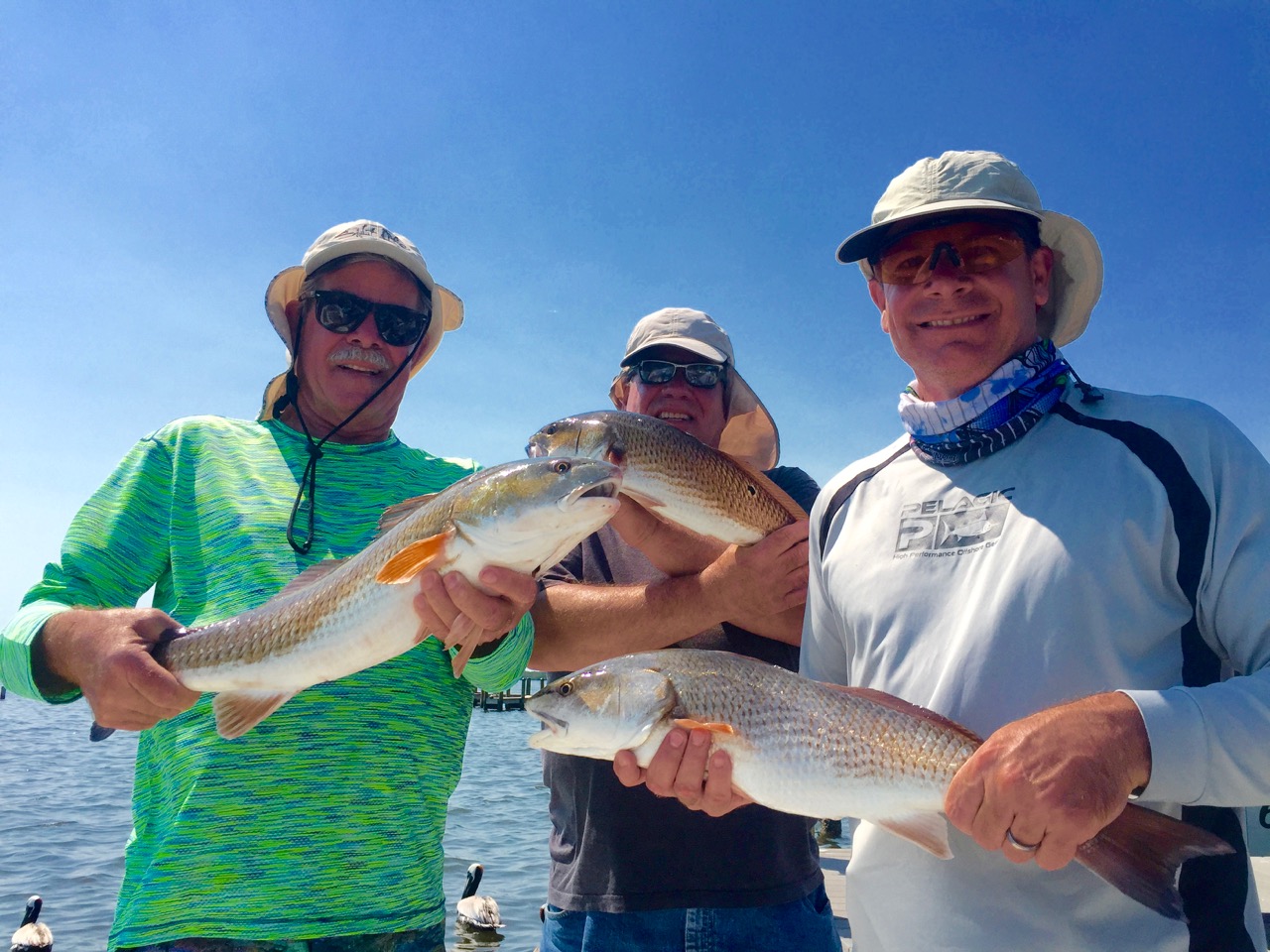It is usually more toward the fall months that I write about the challenges of finding and catching redfish. The last couple of years were slow, even during the months of August, September and October, when redfish anglers have expectations of locating and catching them. So far, this year the redfish action has been second to none and has produced good numbers of slot-size and over-size fish. The months of April and May were both productive and produced large numbers of catches for my charter clients. A few of my ‘Captain’ colleagues have confirmed they have experienced more numbers than those over the past couple of years, during the same time frame.
It appears that the redfish population is in good standing based on recent sightings and results. They are showing up in good numbers around the mangrove islands located in northern areas of Pine Island Sound, as opposed to areas around the mouth of the Caloosahatchee River. Over the last couple of months, I have fished the northern area, the southern area of Pine Island Sound, and the southern part of Matlacha Pass with little to no success, on the latter two. It is unclear to me at this time, as to how much negative effect the fresh water releases from Lake Okeechobee has impacted the southern part. I am confident however, that the seatrout population has suffered. Hopefully, it is me who is remiss and will find ways of improving my redfish catches, by finding more productive locations when fishing south. Until then, I recommend fishing the northwestern areas of the ‘Sound’ as described below.
There are a number of uninhabited mangrove islands to choose from in the ‘northern sector’ (islands and keys located north of the power lines that service Cape Coral, Pine Island and Sanibel/Captiva Islands). They are all located on the western side of Pine Island and for this article’s purpose include, but are not limited to, areas around MacKeever Keys, Big Panther Key, Mesmer Key, Rat Key, Cat Key, Benedict Key, Josslyn Island and Terrapin Key. The caveats are; the ability to know when to enter these shallow areas, have the appropriate type vessel to get there and hopefully have some knowledge of the area you intend to fish. If you do not have the appropriate vessel or knowledge, hire a professional fishing guide who is familiar and works the area(s) mentioned.
In regard as to when the best time to enter and fish these areas during the month of June, I recommend the days between June 05 thru June 15 and the days between June 19 thru June 29. The reason I write this, is because higher tide levels (ranging from 1.9ft. – 2.4ft.) provide sufficient water to allow vessels such as; Flats, Bay, Deck and Semi-Deep ‘V’ boats into the shallow, redfish flats. Details as to tide predictions may be found on at www.saltwatertides.com. One virtually has 3 to 4 hours to enter, fish and exit the shallow water flats. I recommend going in 2 hours before high tide and getting out within 2 hours afterwards. Remember that frisky north and easterly winds will negatively impact tide levels and southerly winds will enhance them.
I recommend fishing a shrimp, cut pinfish, cut ladyfish, cut mullet or crab into the mangroves, as the tide rises. Be quiet and move from location to location around the Key or Island to find the fish. The equipment should be light tackle with 30lb. fluorocarbon leader, to prevent cutoffs from oyster clusters and mangrove roots. I basically fish two methods when using live or dead baits.
- Weighted jig head with a shrimp, cut pinfish or cut ladyfish on the bottom.
- Weighted jig head with a shrimp, cut pinfish or cut ladyfish suspended under a ‘popping’ cork (‘cork’) with a very short leader to prevent the jig head from getting caught on an oyster cluster or dead wood debris that is inherent around some of the Keys and Islands mentioned. This allows presentations deeper into heavily wooded areas.
As the tide rises, make the presentation close to the mangroves and structures for better results. As the tide subsides, work away from the same (presentation placement is identical when using artificial).
Keep in mind that redfish are ‘bottom’ feeders, with mouths designed to pickup food from the seabed. They will usually pickup the bait off the seabed quickly. When fishing suspended baits however, give the redfish time to get the bait into their mouth. I have observed on many occasions anglers trying to set a hook on a suspended presentation when the ‘cork’ is bouncing around. I like to tell my charter clients to let the ‘cork’ go under the water and start swimming away like a submarine, before setting the hook.
The baits of choice for redfish will change with seasons. Big shrimps were plentiful in April and May and that was their preference. As shrimps get smaller in the hotter summer months, be prepared to try the other baits mentioned. These fish will be more apt to take the ‘bait of the season’.
This is Captain Terry Fisher of Fish Face Charters wishing everyone tighter lines. I am available for charters by calling me direct at 239-357-6829 or by emailing me at fishfacecharters@yahoo.com. I am also available as ‘Captain for Hire’ (by the hour) on your vessel for safety and navigational training, fishing techniques and fishing locations that will improve your catch! Check out my website at www.fishfacecharters.com for more information and at www.goboatingflorida for local fishing reports.



